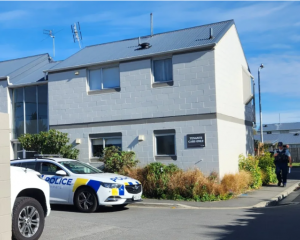"Battle for our Birds" will receive $20.7 million in new operational funding for 2015-16 from the Budget this month, helping to fight back against an expected boom in pest populations caused by a heavy forest seeding, or mast.
South Westland and Kahurangi in Buller are both named as priority areas.
However, the move was immediately slammed by New Zealand First, with outdoor recreation spokesman Richard Prosser arguing for ground control, which would target the "right species and create jobs in the regions".
"This is ludicrous," Mr Prosser said. "The number of rats, stoats and possums is not, and will not be, at biblical proportions as [Ms Barry] claims. The most sensible thing is to fully resource ground control."
However, Ms Barry said they must respond to protect native birds and animals. The Department of Conservation estimated a million tonnes of beech seed would drop to the forest floor over autumn, providing a bonanza of food for rats and causing their population to boom.
"As rats increase due to the readily available food source, so will the number of stoats which feed on rats," Ms Barry said.
"Once the seeds germinate and the food source disappears in early spring, the plague of millions of starving rats and tens of thousands of hungry stoats will turn on native wildlife, bringing disaster if we do nothing."
All indications were the mast was on a similar scale to the previous event in 2014, which saw the launch of "Battle for our Birds", though with a slightly different distribution as more seedfall is predicted in the southern South Island.
This year's "battle" will see DoC ramp up pest control by 500,000ha, to cover more than 800,000ha. DoC says aerial 1080 operations will be backed by ongoing trapping and ground control programmes.
Pilot projects will also be run to test the effectiveness of using self-resetting traps to keep pests permanently out of an area following a 1080 operation.
"By taking what we've learned from our response two years ago we're able to increase the targeted area, protecting more precious habitat and more bird populations," Ms Barry said.
Priorities will be Fiordland, Otago, South Westland, North Canterbury, Kahurangi, the lower North Island, Taranaki and Tongariro.
Research from DoC showed breeding success rates in areas "treated" with 1080 were far greater than in areas with no control, she said.
"We simply can't allow ill-informed, unscientific campaigns to cause us to back away from what we need to do to save our taonga species," Ms Barry said.
Green Party conservation spokesman Kevin Hague said it was commendable that the minister had put aside the money for the "Battle for our Birds" but other areas of conservation were going to have to make up the shortfall to pay for it.
"This funding has been announced to deal with a 'mast' season, or heavy fruiting season in which rats and stoat populations explode.
"We'll see more of these as the impact of climate change comes home to roost, so the Government should be putting a lot more resource into DoC to get pest populations under control. We risk losing our native species if it doesn't," Mr Hague said.
DoC said last week there was evidence of medium to high seeding in the Haast, Landsborough and Arawhata valleys, while that in the Kahurangi National Park was patchy, with some areas of medium to high seedfall as well as areas of low seedfall.












